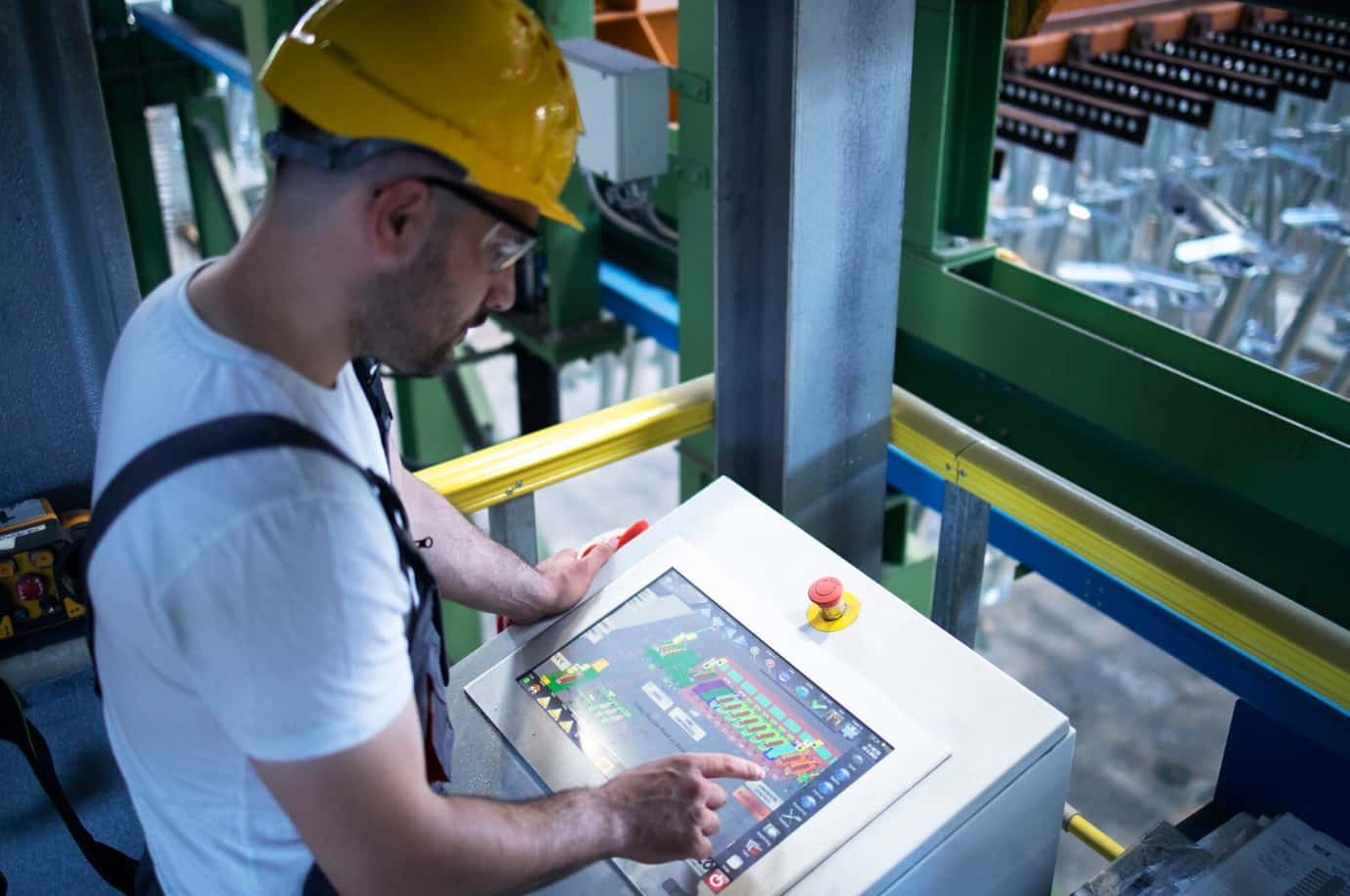Walk into any modern factory, peek under the hood of your car, or examine the smartphone in your pocket, and you’ll find something remarkable: nearly every precision component was likely created using CNC machining.
From the tiniest electronic circuits to massive aerospace components, Computer Numerical Control (CNC) machining has quietly become the invisible force driving modern manufacturing.
But what makes this technology so indispensable? Why do industries from automotive to medical devices depend on CNC machining for their most critical components?
The answer lies in the perfect marriage of precision, efficiency, and versatility that CNC technology brings to manufacturing.
Why CNC Machining is the Backbone of Modern Manufacturing?

In today’s competitive global marketplace, manufacturers can’t afford to compromise on quality, speed, or cost-effectiveness.
CNC machining delivers on all three fronts, making it not just a manufacturing method, but the very foundation upon which modern industry is built.
The Evolution of CNC: From Manual to Digital Precision
The Pre-CNC Era
Before CNC machining revolutionized manufacturing, skilled machinists operated lathes, mills, and other tools entirely by hand.
These craftsmen possessed incredible skill, but human limitations meant that complex parts took weeks to produce, and achieving consistent precision across multiple pieces was nearly impossible.
The traditional manufacturing process was plagued by several challenges:
- Inconsistent quality between different operators
- Time-intensive production for complex geometries
- Limited complexity in part designs
- High labor costs for skilled machinists
- Difficulty scaling production volumes
The Birth of Computer Control
The concept of numerical control emerged in the 1940s and 1950s, driven by the aerospace industry’s need for precision components.
Early NC machines used punched tape to control tool movements, but the real breakthrough came with the integration of computers in the 1970s.
CNC technology transformed manufacturing by:
- Eliminating human error in repetitive operations
- Enabling complex geometries previously impossible to machine
- Providing consistent quality across thousands of parts
- Reducing setup times through programmable operations
- Allowing 24/7 production with minimal supervision
Industries That Depend on CNC Machining
Automotive Manufacturing
The automotive industry consumes more CNC machining capacity than any other sector. Every vehicle contains hundreds of precision-machined components, from engine blocks and transmission parts to brake rotors and suspension components.
Modern automotive manufacturing demands:
- Tight tolerances for engine components (often ±0.01mm)
- High-volume production to meet global demand
- Cost efficiency to maintain competitive pricing
- Material versatility for lightweight and strong components
Consider the complexity of a modern engine block. It contains dozens of precisely machined cylinders, oil passages, and mounting surfaces that must align perfectly. Traditional manufacturing methods simply couldn’t achieve this level of precision at automotive production volumes.
Aerospace and Defense
Aerospace applications push CNC machining to its absolute limits. Aircraft components must withstand extreme temperatures, pressures, and stresses while maintaining incredibly tight tolerances.
Key aerospace applications include:
- Turbine blades with complex curved geometries
- Landing gear components require exceptional strength
- Structural components that must be both lightweight and durable
- Avionics housings with precise electromagnetic shielding properties
The aerospace industry’s stringent quality requirements, governed by organizations like the Federal Aviation Administration, demand manufacturing processes that can deliver consistent, traceable results. CNC machining provides the precision and documentation capabilities necessary to meet these regulatory standards.
Electronics and Technology
The electronics industry relies heavily on CNC machining for creating housings, heat sinks, connectors, and circuit board components. As electronic devices become smaller and more powerful, the demand for precision manufacturing continues to grow.
Electronics manufacturing applications include:
- Smartphone cases requiring precise fits and finishes
- Circuit board drilling for component mounting
- Heat sink manufacturing for thermal management
- Connector components with micro-level precision
Medical Device Manufacturing
Perhaps no industry demands higher precision than medical device manufacturing. CNC Machining
Medical applications require:
- Biocompatible materials like titanium and medical-grade plastics
- Sterilization compatibility for repeated use
- Custom geometries for patient-specific devices
- Regulatory compliance with FDA and international standards
From surgical instruments to implantable devices, CNC machining enables the medical industry to create components that meet the most demanding safety and performance requirements.
The Core Benefits of CNC Machining
Unmatched Precision and Accuracy
CNC machines can achieve tolerances as tight as ±0.0001 inches (±0.0025mm), far exceeding what human operators can accomplish manually. This precision is maintained consistently across thousands of parts, ensuring every component meets exact specifications.
The precision advantage manifests in several ways:
- Dimensional accuracy that eliminates assembly issues
- Surface finish quality that reduces post-processing needs
- Geometric complexity enabling innovative designs
- Repeatability ensures every part is identical
Enhanced Efficiency and Speed
Modern CNC machines operate around the clock with minimal supervision. Once programmed, they can produce parts continuously, dramatically reducing production times compared to manual machining.
Efficiency benefits include:
- Faster cycle times through optimized tool paths
- Reduced setup times with programmable operations
- Multi-axis capabilities complete complex parts in a single operation
- Automated tool changes minimize downtime
Scalability and Flexibility
CNC machining scales effortlessly from prototype quantities to high-volume production. The same program that creates a single prototype can produce thousands of identical parts without modification.
Scalability advantages:
- Easy volume adjustments based on demand
- Quick design modifications through software updates
- Multiple part varieties from the same machine setup
- Rapid prototyping capabilities for design validation
Cost-Effectiveness at Scale
While CNC machines require significant initial investment, they deliver exceptional value through reduced labor costs, minimal waste, and consistent quality that eliminates costly rework.
Cost benefits include:
- Lower per-part costs at higher volumes
- Reduced material waste through precise cutting
- Minimal quality issues eliminate rework costs
- Lower labor requirements compared to manual operations
Real-World Applications Across Industries
Consumer Products
CNC machining touches virtually every consumer product category. Kitchen appliances, sporting goods, furniture hardware, and countless other items rely on CNC-manufactured components.
Popular consumer applications:
- Kitchen appliance components require food-safe materials and precise fits
- Sporting equipment demands lightweight yet durable construction
- Furniture hardware combining functionality with aesthetic appeal
- Tool manufacturing requires hardened surfaces and precise geometries
Energy and Power Generation
The energy sector depends on CNC machining for both traditional and renewable energy applications. Power plant components, wind turbine parts, and solar mounting systems all require precision manufacturing.
Energy industry applications:
- Turbine components for power generation
- Oil and gas drilling equipment withstands extreme conditions
- Solar panel mounting systems require weather resistance
- Battery manufacturing equipment for electric vehicles
Industrial Equipment
Manufacturing equipment itself relies heavily on CNC machining. The machines that make other machines must be manufactured to exacting standards to ensure reliable operation.
Industrial equipment examples:
- Machine tool components require exceptional accuracy
- Automation equipment with precise positioning systems
- Material handling systems demand reliable operation
- Quality control instruments need to be calibrated with precision
The Future of CNC Machining: Automation and AI Integration
Smart Manufacturing and Industry 4.0
The integration of Internet of Things (IoT) sensors, artificial intelligence, and machine learning is transforming CNC machining from a standalone process into part of interconnected smart manufacturing systems.
According to manufacturing standards developed by organizations like the National Institute of Standards and Technology, the future of manufacturing lies in intelligent, adaptive systems that can optimize themselves in real-time.
Future developments include:
- Predictive maintenance prevents unexpected breakdowns
- Real-time quality monitoring catches defects before they occur
- Adaptive machining adjusts parameters based on material variations
- Lights-out manufacturing operates unmanned for extended periods
Advanced Materials and Processes
CNC technology continues evolving to handle new materials and manufacturing challenges. Advanced composites, superalloys, and engineered plastics require specialized machining approaches that push the boundaries of current technology.
Emerging capabilities:
- Hybrid manufacturing combines additive and subtractive processes
- Micro-machining for increasingly miniaturized components
- High-speed machining reduces cycle times dramatically
- Multi-material processing handles dissimilar materials simultaneously
Sustainability and Environmental Considerations
Modern CNC machining incorporates environmental considerations through improved efficiency, reduced waste, and energy optimization. According to research published on Engineering.com, sustainable manufacturing practices are becoming increasingly important for competitive advantage.
Sustainability initiatives include:
- Energy-efficient machine designs reduce power consumption
- Optimized cutting strategies minimize material waste
- Coolant recycling systems reduce environmental impact
- Predictive analytics optimizing resource utilization
The Human Element in CNC Manufacturing
Despite increasing automation, skilled technicians remain crucial to CNC operations. Modern CNC operators are part programmer, part troubleshooter, and part quality inspector, requiring a unique blend of technical and analytical skills.
The evolving role includes:
- Programming complex operations requires deep technical knowledge
- Problem-solving when unexpected issues arise
- Quality assurance ensures parts meet specifications
- Process optimization improves efficiency and quality
Training and education programs are adapting to prepare the next generation of CNC professionals for increasingly sophisticated manufacturing environments.
Challenges and Considerations
Initial Investment and Setup Costs
CNC machining requires significant upfront investment in equipment, tooling, and training. However, this investment typically pays for itself through improved efficiency, quality, and reduced labor costs.
Cost considerations include:
- Machine acquisition costs range from thousands to millions of dollars
- Tooling expenses for specialized cutting tools
- Training requirements for operators and programmers
- Facility modifications for proper machine installation
Technical Complexity
Operating CNC machines requires specialized knowledge of programming languages, cutting tool selection, and machining parameters. This complexity can present barriers for smaller manufacturers or those new to CNC technology.
Technical challenges:
- Programming expertise for complex geometries
- Tool selection for different materials and applications
- Process optimization balancing speed, quality, and tool life
- Maintenance requirements keep machines operating efficiently
Conclusion: The Indispensable Foundation of Modern Manufacturing
CNC machining has earned its position as the backbone of modern manufacturing through decades of proven performance across virtually every industry.
Its unique combination of precision, efficiency, scalability, and versatility makes it indispensable for creating the complex, high-quality components that define today’s products.
From the smartphone in your pocket to the aircraft flying overhead, CNC machining enables the precision manufacturing that modern life depends upon.
As technology continues advancing toward greater automation, artificial intelligence, and sustainable practices, CNC machining will undoubtedly evolve to meet new challenges while maintaining its central role in manufacturing.
The industries that embrace CNC technology gain competitive advantages through improved quality, reduced costs, and faster time-to-market.
Those that fail to adapt risk being left behind in an increasingly competitive global marketplace.
Looking forward, CNC machining will continue evolving, incorporating new technologies and capabilities while maintaining its fundamental promise: the ability to create precise, complex components reliably and efficiently.
This evolution ensures that CNC machining will remain the backbone of manufacturing for decades to come, supporting innovation and economic growth across countless industries worldwide.
In a world where precision matters, quality cannot be compromised, and efficiency drives competitiveness, CNC machining stands as the technological foundation that makes modern manufacturing possible.
It’s not just a manufacturing process—it’s the enabler of innovation, the guardian of quality, and truly the backbone upon which modern industry is built.



